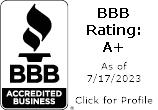Hurricanes, even tame ones, can be a nightmare for unprepared homeowners. Newer homes built with spcical methods and materials tend to fare better than older homes in violent winds and rising water, but everyone needs to be prepared. The key is to take preventative measures long before storms reach your door. Read on to learn about some of the most common hurricane damages and what you can do to minimize it.
Broken Windows:
Windows are particularly susceptible to hurricanes both because of the wind itself and the debris the wind carries. Once windows are broken, your home could become much weaker and less resistant, sustaining even greater damage. Preparing your windows for storms should be done well in advance, as supplies will become scarce if you wait until the last minute. While it might seem like a simple solution, taping your windows won’t make much of a difference. Instead, buy plywood that’s about 5/8 to 3/4 of a inch thick and some heavy duty bolts. Cut the plywood to fit the window and bolt it to the window frame. If you have the money, consider investing in commercial hurricane shutters, which can make it easier to protect your windows when the need arises.
Roof Lifting:
When the intense winds from a hurricane strike a house, one of the first things to be hit hardest is the roof. Roofs with a low slope act similarly to a airplane wing, with strong winds actually remove the roof from the house. If your roof goes, along with the joists that hold the tops of the walls together, your house could be one for. If you’re building a new home, the easiest way to protect against this is to build a roof with a steep roof, greatly reducing the amount of lift. You can modify your existing roof to help it stay in place as well. Metal hurricane straps can be installed by professionals (or you if you’re particularly handy) to tie rafters down to the top wall and keep your roof in place. Call Amherst Roofing, Inc of Collier County and we will come out and look for any damage.
Basement Flooding:
If your home has a basement or crawlspace, it can flood when the soil surrounding your home becomes too saturated with water, damaging any items you have stored there and making a mess of your foundation. You can help prevent rising waters and rain from filling your basement by making sure that your gutters are clear and in good working order. You can also extend downspouts so that they draw water further away from your home. If you have time, try to eliminate some of the low spots surrounding the foundation of your home. Also, check your sump pump to make sure it’s working properly to help stave off some of the early flooding around your foundation.
Blown in Garage Door:
Garage doors, because of their large size, can often fall victim to high winds. Once the garage blows in, winds will be able to enter your home, allowing wind pressure to fill the house and possibly blow it down from the pressure inside. You can improve your chances of your door surviving a storm by investing in a srong door and also bracing it with 2x4s on the inside which are securely attached to the frame of your home.
Moisture Damage:
Heavy rains and rising waters, if they do get into your home, can cause more than immediate damage. Mold can develop from moisture that gets into insulation and wood. Newer homes can benefit from mold resistant materials, but owners of older homes need to take action ensure that moisture never gets inside in the first place. There are a number of ways you can modify your home to keep water out. Change the venting on your house from unbaffled to baffled vents, which can prevent water from getting into attic spaces. You can also install capillary breaks to keep water that flows off of the outside of your home from getting into cracks in the foundation. Additionally, you can protect your roof by extending the fascia board out so that it ends at the underside of the soffit. This will keep water from seeping into your eaves.
Damage from Landscaping:
If you live in a hurricane prone area, you’ll want to carefully consider your yard options and use trees and bushes that are more resistant to storm winds. Small gravel, weak tree branches, and other easily lifted things around your yard should be taken care of before hurricane season. Trim your trees of dead and weak branches so they won’t be knocked down by winds and tossed into your home. You can also have professionals trim large trees strategically to help high winds to flow through more easily.
Destroyed Doors:
Your doors, like windows, are important part of keeping out the winds and rains that can damage the interior of your home and its contents. Doors that aren’t sturdy or properly secured are often blown open or even off their hinges, becoming a danger to you as well as the structure of your home. Before the storms hit, ensure that your front door is attached to your home with at least 3 hinges and that you have a deadbolt securely attached to the frame of your home that you can lock in the event of the storm. It might also help to have a door that swings out instead of in to help keep out rain as well as resist wind. Don’t forget about sliding glass doors, as well, which should be covered with plywood in the same manner as your windows.
Damage from Projectiles:
Chances are good that if you live in the tropical or near tropical areas that are particularly hurricane prone you have loads of stuff sitting outside for enjoying the weather. But BBQ grills, patio furniture, lawn ornaments, air conditioners and pool equipment can become deadly and damaging if left out in the high winds. Bring these kinds of things indoors or make sure they are very well secured outside. Don’t assume that anything is too heavy to be lifted.
Lost Shingles and Roofing:
During a hurricane, your roof will be under constant force from the wind, and few roofing materials can withstand this kind of assault without sustaining some sort of damage. Newer shingles are designed to resist damage from impact and high winds, but if you can’t afford a whole new roof, you can make sure the one you have is properly secured.
Loss or Destruction of Personal Items:
While there may be no way around losing your personal belongings in a powerful storm, you can do your best to protect them. Raise your items off the floor to keep them from flood waters, especially if they’re stored in a basement. You’ll, of course, want to take any valuables and important documents with you if you evacuate your home and keep them in a safe, waterproof container if you do opt to stay. As odd as it may sound, the dishwasher can often be a good place to store important items.
Ruined In-Ground Pool:
Since pools are usually outside, they get the full force of what any hurricane has. To keep yours from being harmed by rising water levels there are tips you can do. First, don’t empty out your pool. Always keep it at least half full, otherwise you could damage the structure of your pool as it struggles with the rising water pressure around it from water saturated soil. Switch off the electricity to your pool pump and seal it in plastic to provide extra protection. Then, add some extra chlorine to your water to keep it from becoming contaminated and to compensate for the heavy rains.
Blown Off Siding:
If you have a home with aluminum siding, you’ll want to do your best to protect it from the hurricane winds that are sure to give it a run for its money. Before the storms ever hit, make sure your siding is in good repair and that it’s properly secured to your home. Missing or loose parts will provide easy access for wind, which can then rip the remaining siding from your home.
Missing Roof Turbines:
If you live in a house with turbines on the roof, it’s not likely that they’ll survive a storm with strong winds. This might not be a problem, except that once the turbines blow away, your roof is left with a hole in it, which can allow harmful amounts of water to enter your home. If you plan ahead, you can buy caps for the turbines. When a storm approaches, remove the turbines and install the caps in their place to keep water out.
Collapsed End Gables:
During a hurricane, the side walls of your roof, also known as end gables, will be taking quite a beating from the wind and rain, and if not properly reinforced, can actually collapse. Many homes will already have properly braced gables, but if yours does not, you can give them a hand by placing two 2x4s in an X pattern on both ends of the attic. If you don’t know much about construction, it will be best to have a professional contractor do this work for you.
Knocked Down Outbuildings, Carports and Porches:
Less sturdy buildings on your property will be hit hard by a hurricane and the ensuing winds. These structures can become airborne and potentially very dangerous if they’re knocked down during a storm. Reinforce these structures whenever possible and make sure porches are securely attached to your home. Carports that are freestanding are much less likely to cause substantial damage to your home that ones that are attached, though much depends on the roof anchoring. The best you can do for many outdoor structures is to tie them down or reinforce their attachment to the ground.
Spoiled Food:
Because power frequently goes out during large storms and often doesn’t come back on for days, food can become spoiled quickly, especially in a warm environment. You can help save some of your food by turning your refrigerator and freezer to the coolest settings in the days before the storm.
Ruined Appliances:
Your appliances can be subject to a number of threats during a hurricane. Water damage may not always be avoidable with heavy appliances, but you should give your air conditioner and other appliances a lift. You should also unplug any major appliances once a storm hits. This will prevent shorting out if water comes in as well as destruction of electronic components if there is a surge when the power returns.
Fire Damage:
Water and electricity don’t mix, and shorts caused by downed wires or water entering outlets and electrical equipment can cause fires even in the dampest of environments. Wind can spread these fires quickly, compounding the problem. You can help avoid fires by unplugging all electronic devices in your home. If you are building a new home or revamping an old one, make sure that all electrical outlets and main electric components of your home are at least a foot above the floor.
Leaky Septic Tanks:
Flooding and ground saturation can often cause septic tanks to have trouble functioning, and power outages will disable any electric powered pumps on a tank, causing sewage backup into your home. There is really no way to avoid the ground saturation caused by flooding, but you can help reduce it by placing your septic tank in a well drained area. Providing backup electricity from a generator can also help after the storm if power is out for long periods.
Lost or Damaged Boats:
For many people living near the coastline, boats is an important part of hurricane preparation. Boats stored on land are much more likely to weather a storm successfully than those stored on the water. If you have to leave your boat in the water, secure it in a snug harbor, away from rocks and other damaging elements, with as many ties as possible keeping it in place. Try finding a mooring inland for added safety. If you are storing your boat on land, make sure to strip off all canvas parts which can catch the wind and be hard to replace after the storm. Keep your boat on your trailer and park it in a garage or near a building. Fill the boat partway with water, let out some of the air in the trailer tires and latch the whole thing down with as many ropes and chains as you can find.


